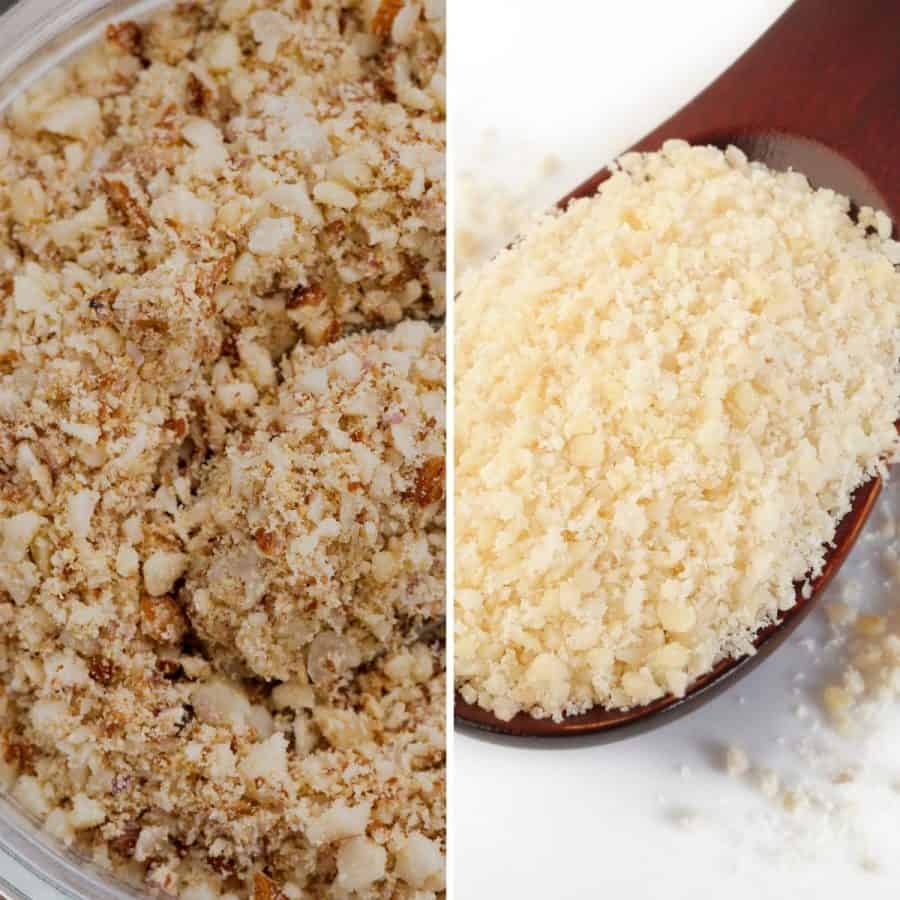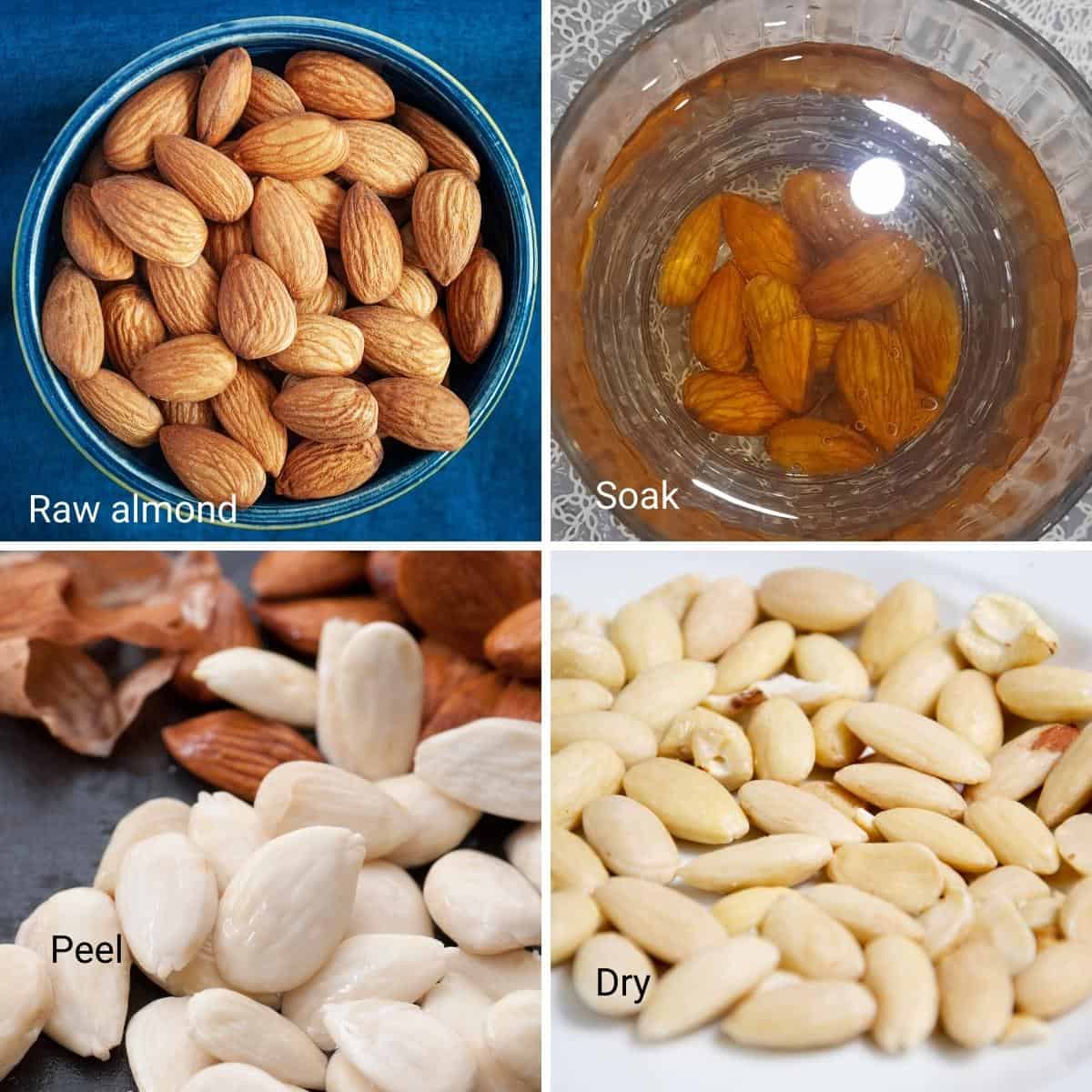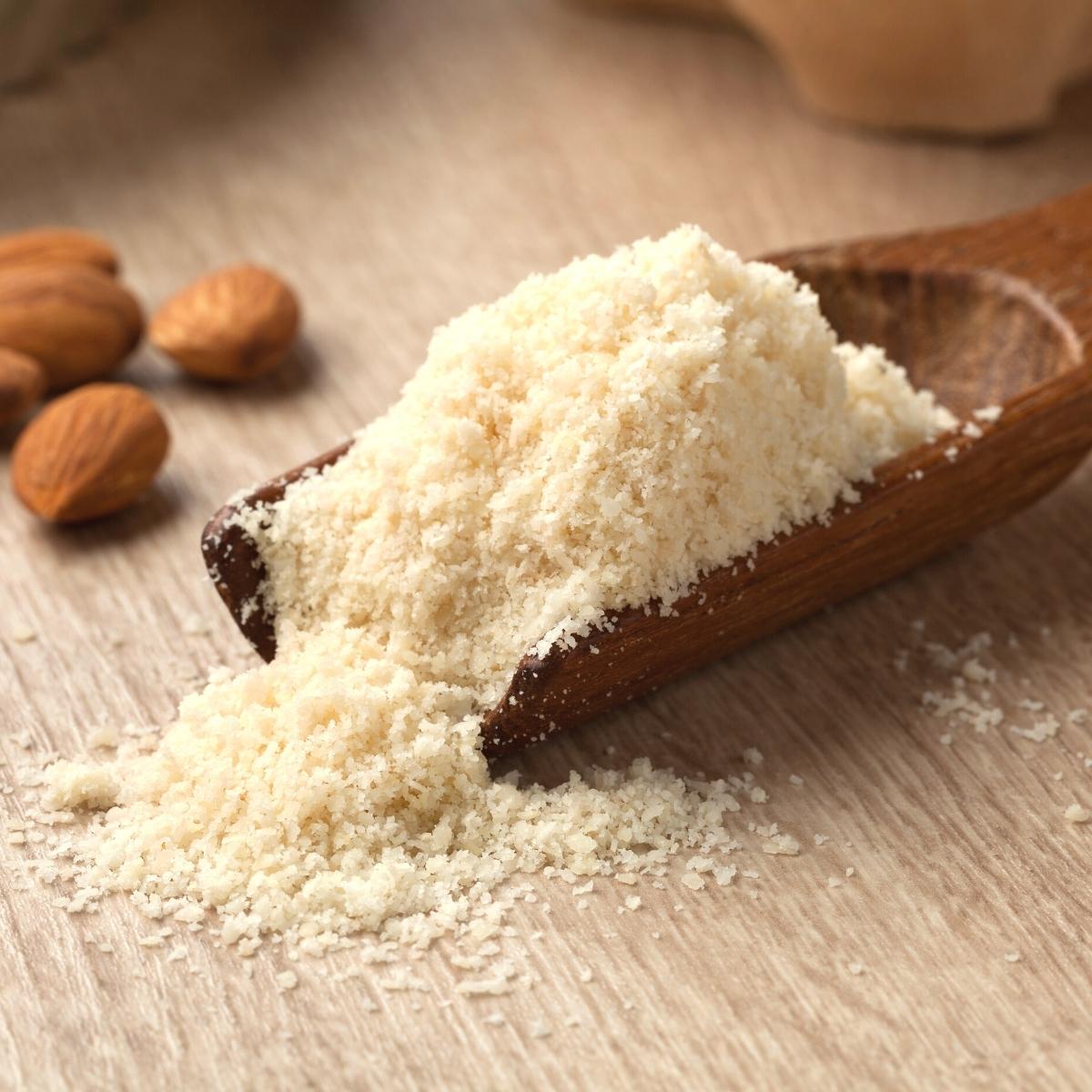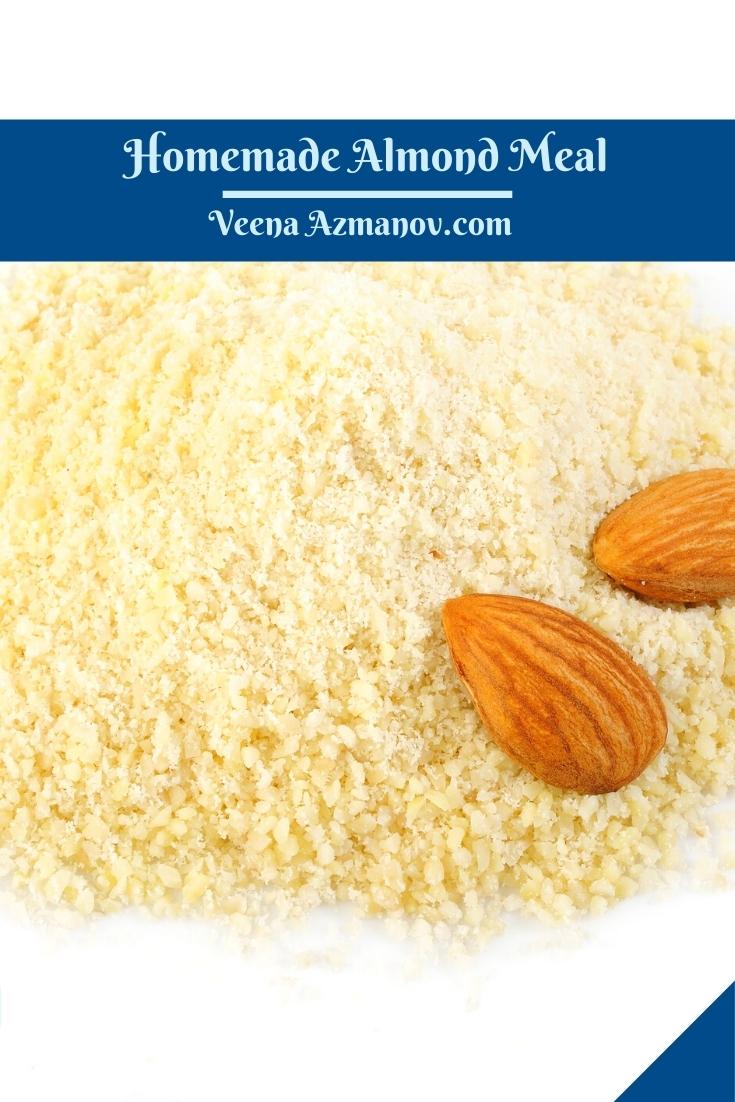How to make almond flour
Start with whole almonds: Begin with whole almonds that have their skins intact. You can use either raw or blanched almonds, depending on your preference. Blanch the almonds (optional): If you want to remove the skins for a lighter-colored almond meal, blanch the almonds. Bring a pot of water to a boil and add the almonds. Let them boil for about 1 minute, then drain and rinse them with cold water. The skins should be easy to peel off. Pat the almonds dry before proceeding.
Dry the almonds: Spread the almonds in a single layer on a baking sheet. Allow them to air dry for a few hours, or alternatively, you can place them in a preheated oven at a low temperature (around 170°F or 75°C) for about 10-15 minutes to speed up the drying process. Pro tip – Make sure the almonds are completely dry before proceeding.
Grind the almonds: Transfer the dried almonds to a food processor or blender. Pulse the almonds in short bursts until they reach the desired texture. For almond meal, you can pulse until you achieve a coarse, grainy consistency. If you prefer a finer texture resembling almond flour, continue pulsing until you reach the desired consistency. Pro tip – Be cautious not to over-process, as the almonds may release their oils and turn into almond butter. Sift (optional): If you want a finer almond meal, you can sift the ground almonds through a fine-mesh sieve to remove any larger pieces. This step is optional and depends on personal preference. Store the almond meal: Once you have made your almond meal, transfer it to an airtight container or a resealable bag. Store it in a cool, dry place or the refrigerator to maintain its freshness.
It’s worth mentioning that making almond meal at home may yield a slightly coarser texture compared to store-bought almond flour. However, it can still work well in various recipes as a substitute for almond flour. Almond flour has a slightly sweet and nutty flavor, which can add richness and depth to baked goods. It is often used in recipes for cakes, cookies, muffins, and breads. Almond flour is also a popular ingredient in low-carb and ketogenic diets because it is lower in carbohydrates and higher in healthy fats and protein compared to wheat flour. Due to its unique composition, almond flour does not have the same properties as wheat flour. It lacks gluten, a protein found in wheat that gives dough its elasticity and structure. As a result, baked goods made with almond flour tend to be denser and moister. To compensate for this, recipes using almond flour may require additional eggs or binders to help provide structure. Almond flour is widely available in grocery stores, health food stores, and online. It is important to note that almond flour and almond meal are sometimes used interchangeably, but they can have slightly different textures. Almond flour is typically made from blanched almonds, while almond meal may contain the skins, which can affect the final texture of baked goods. It’s worth noting that in some cases, the terms “almond meal” and “almond flour” are used interchangeably, and the distinction between the two may not be strictly followed. Always check the product description or recipe instructions to determine whether it specifically calls for almond meal or almond flour and adjust accordingly.
Making almond meal/flour for macarons
It is important to have DRY finely ground almond meal/flour when making macarons. The best way to do this, is to add a few tablespoons of powdered sugar from the recipe to the food processor when blending.Pro tip – The dry powdered sugar will prevent the almonds from releasing any oils and you will have a wonderfully finely ground almond meal for macarons.
Almond flour from almond pulp
The almond pulp left in the strainer after making almond milk can be used to make almond meal. Squeeze the almond pulp as dry as you can. Then, spread the pulp on a baking tray in a thin layer.Pro tip – The drier the pulp the faster it will dry in the oven. I like to use a cheesecloth to squeeze as much moisture as I can. Bake in a preheated oven at 200°F/100°C for about 60 to 90 minutes or until completely dry stirring in between.Pro tip – Do not be tempted to turn the oven on high as it can burn the pulp leaving a burnt taste. Once dried, place in a food processor and pulse to break any lumps and get an even consistency.Pro tip – Make sure the pulp is cooled completely before pulsing in the food processor or you will have a soggy almond meal.
Thank you for sharing - Save for later
Remember that homemade almond flour or almond meal may have a slightly different texture compared to store-bought versions. It may require some recipe adjustments or experimentation to achieve the desired results. These are just a few examples, but almond flour can be used in many other recipes, such as cakes, pie crusts, muffins, scones, and more. Feel free to experiment and adapt your favorite recipes by substituting almond flour for traditional flour to create gluten-free alternatives.










